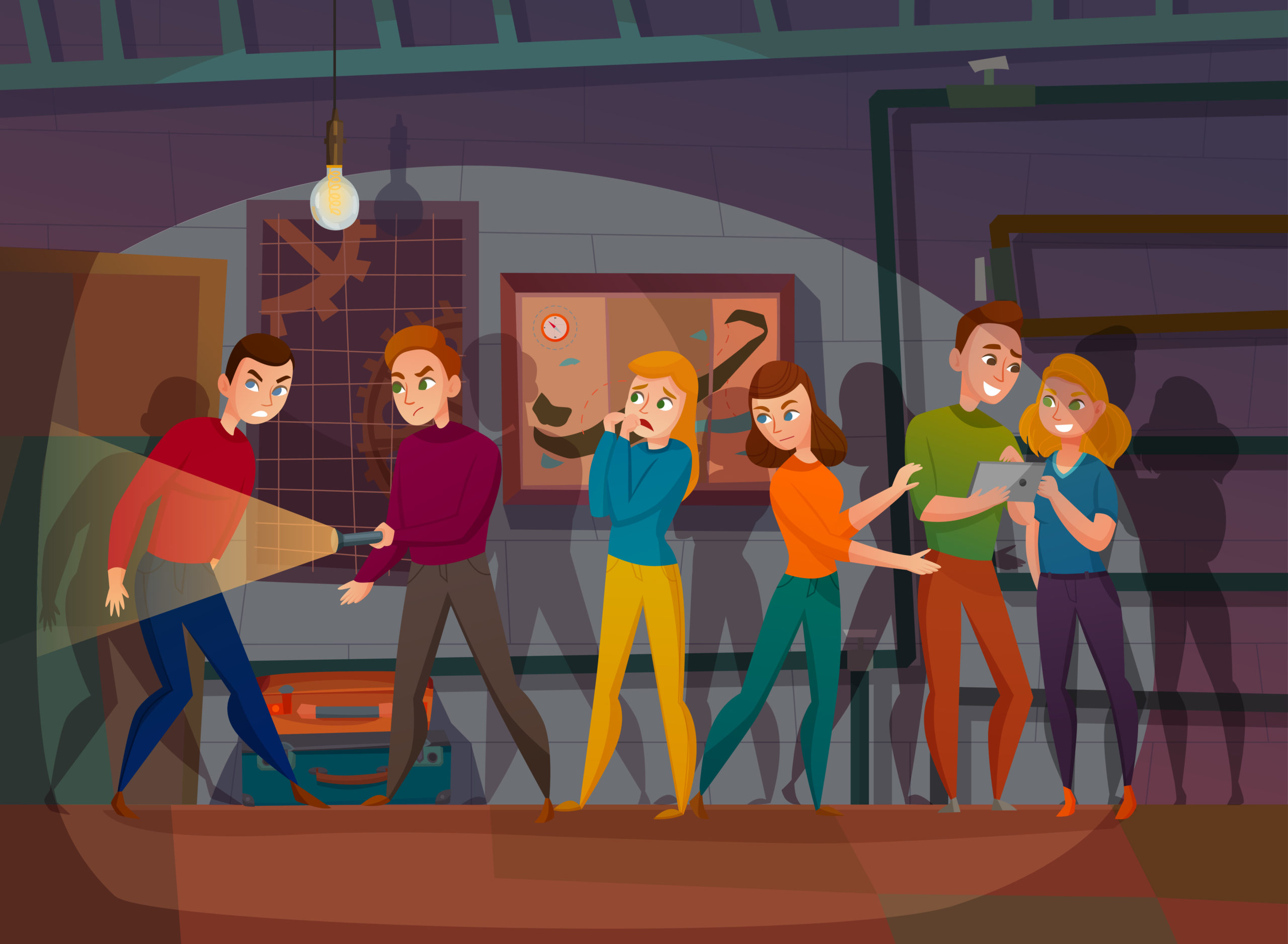How to develop an inclusive and accessible pedagogical escape game - Part 2
Logopsycom
In the first part of this article we looked at the escape game environment. Indeed, for an escape game to be successful, it requires that the staging and the situation are thought out and adapted to the needs of the audience. The ambiance, the atmosphere, the sets must be arranged to meet not only the requirements of the game but also to offer a reassuring and encouraging setting that promotes the best possible experience in terms of entertainment, emotion and learning for the participants.
As you will have understood, learning scape should be a convivial moment of sharing, learning and collaboration.
To ensure that your educational escape game is a success, the inclusive material development part and the role of the game master are as much a must as the layout of the room itself.

Developing your puzzles
You want to surprise the participants with a variety of puzzles and offer playful, intriguing and stimulating combinations.
To do this, you need to ask yourself a few essential questions:
• Choice of font
Are the characters large enough, contrasting, readable for everyone, for those with learning disabilities as well as for those with vision problems?
Prefer a sans serif font and ideally print on a medium where the content is well contrasted and visible (avoid tone on tone to make it easier to read and decipher for people with learning disabilities such as dyslexia).
• Difficulty of the texts
Also use simple vocabulary and don’t hesitate to substitute words with pictures.
• Is the puzzle easy to handle?
If a series of folds or a puzzle is required, make sure that it will not be difficult for participants with fine motor skills (such as dyspraxia).
• A digital riddle?
This can be a good alternative but again, make sure that the hardware is suitable and easy to use (joystick, keyboard, mouse, touch interface) as a motor impairment can limit the player in solving the puzzle especially if it has to be completed in a limited time.
• An enigma on video?
The indispensable role of the game master

Welcome, introduction, instructions.
At first it is he who welcomes and introduces the game, which are very important moments. Indeed, making the participants feel comfortable and confident before the beginning of the game conditions in a way the smooth running of the game. For this, verbal and non-verbal communication is very important.
It is therefore necessary to ensure that :
- The information and indications given are extremely clear and ensure that they are well assimilated and understood by all.
- Prevent if certain steps are difficult to access for a person with a disability or a learning disability.
- Ask questions about player profiles to identify possible risks or adapt the way the puzzles are given as the game progresses.
- Establish a warm, trusting and relaxed atmosphere, because the participants are above all there to be entertained.
For this task, the game master must be extremely attentive so that the game remains stimulating for the players, but that they do not get stuck during the whole game either.
It is therefore necessary that the master of the game :
- accompanies the participants in the adventure by giving them at the right moment the clues or the thumbs-up necessary for them to solve the riddles and succeed in finishing the game. The participants must be stimulated but not frustrated.
- anticipate how to give the clues according to an audience with a specific need or disability, for example in audio mode (loudspeaker or telephone) or rather in visual mode (slip a piece of paper under the door).